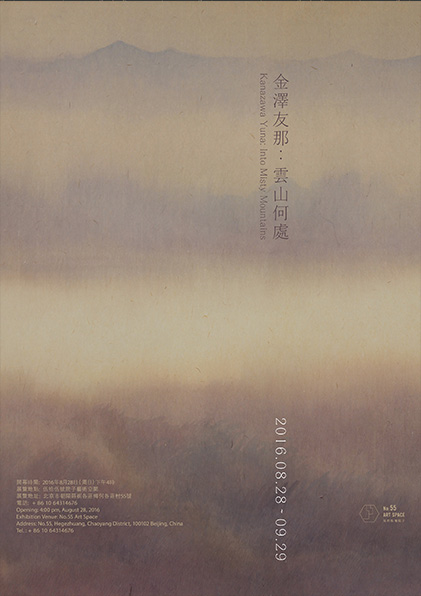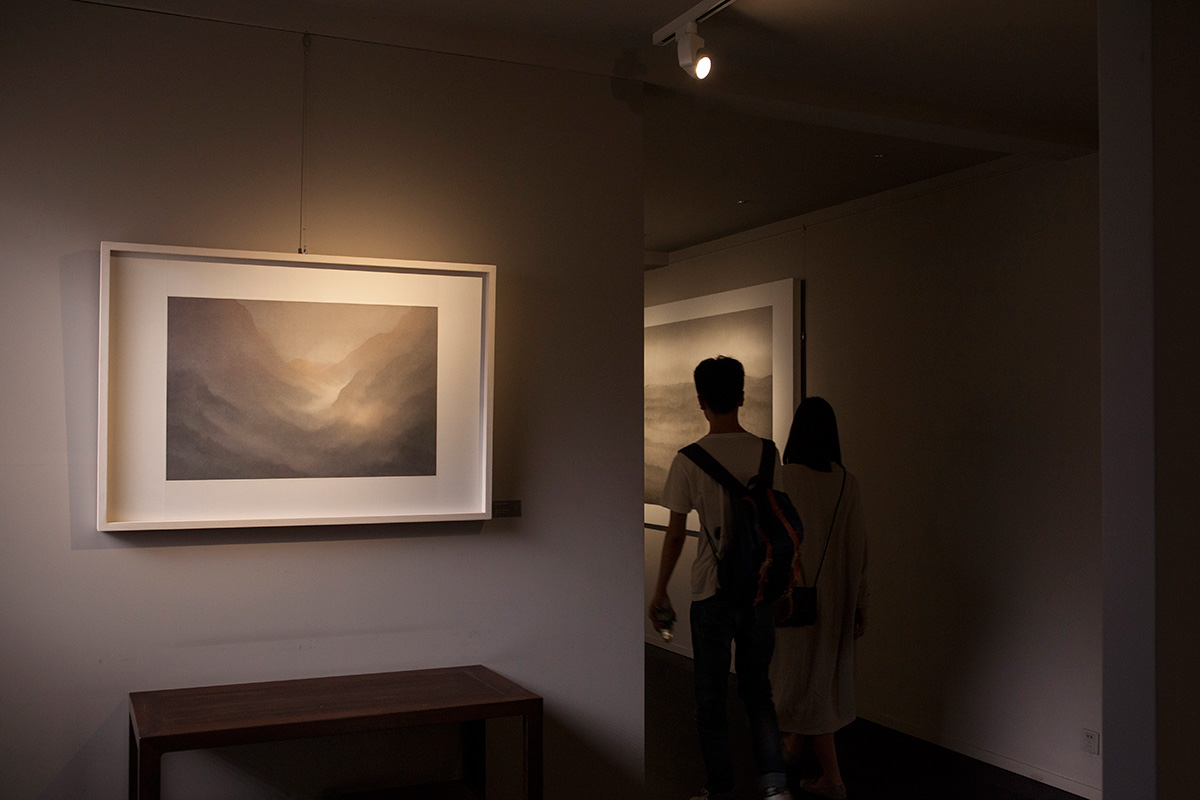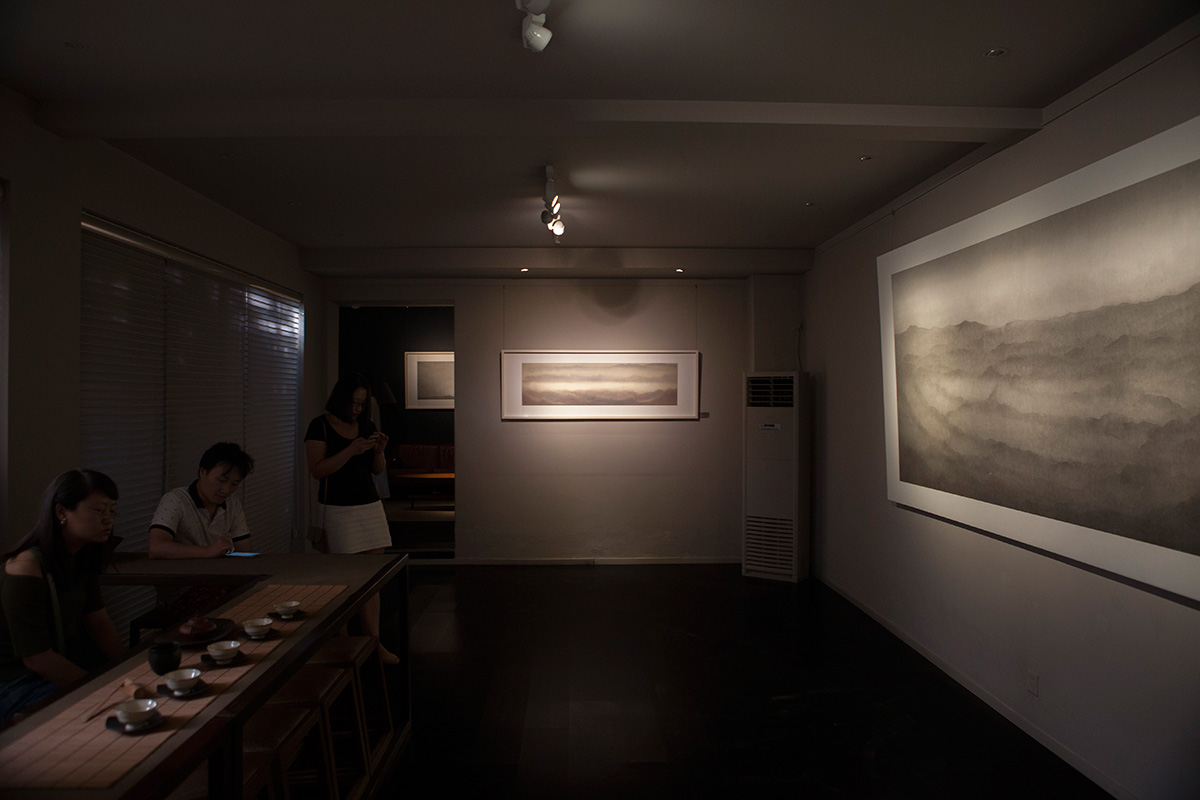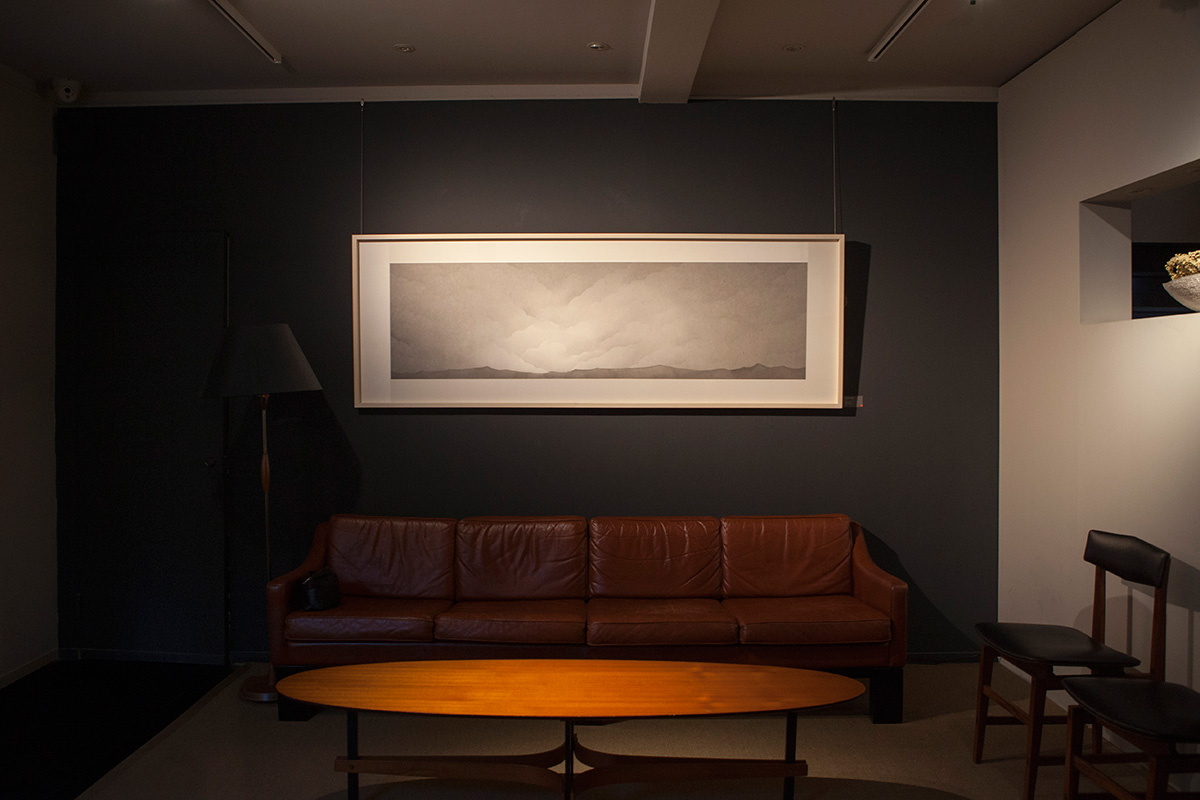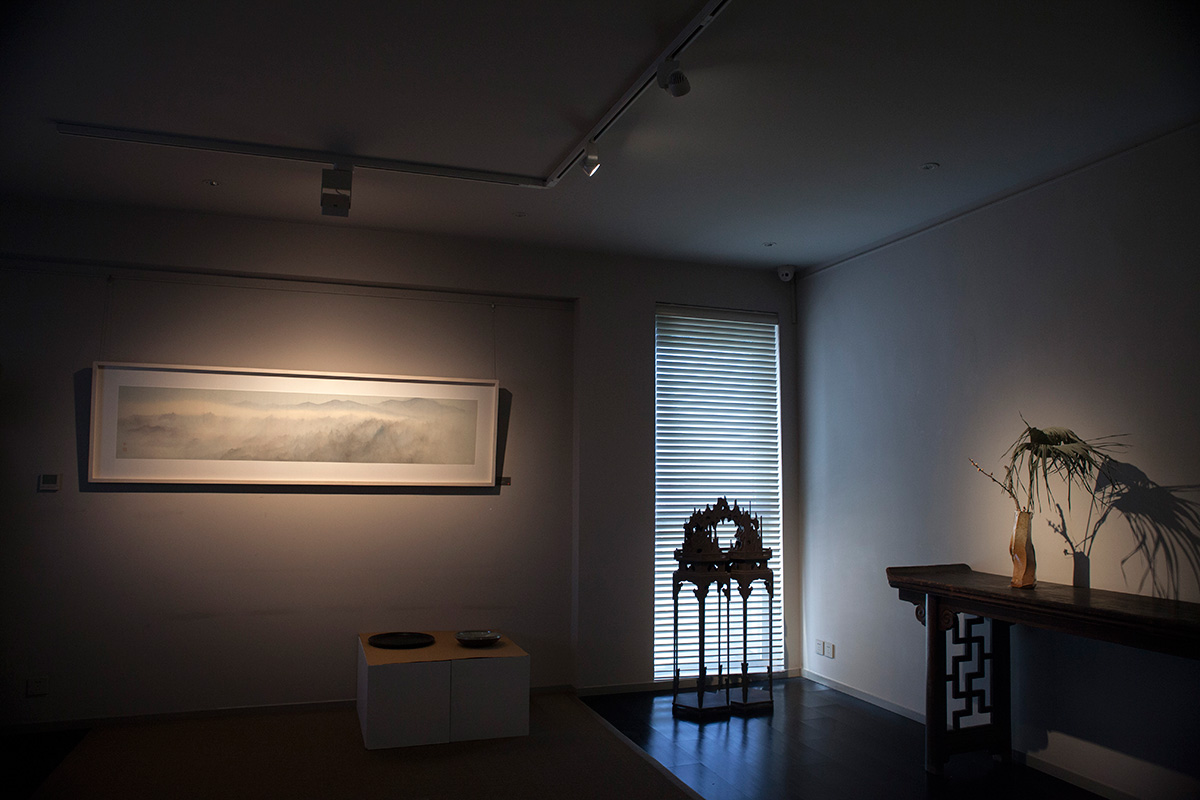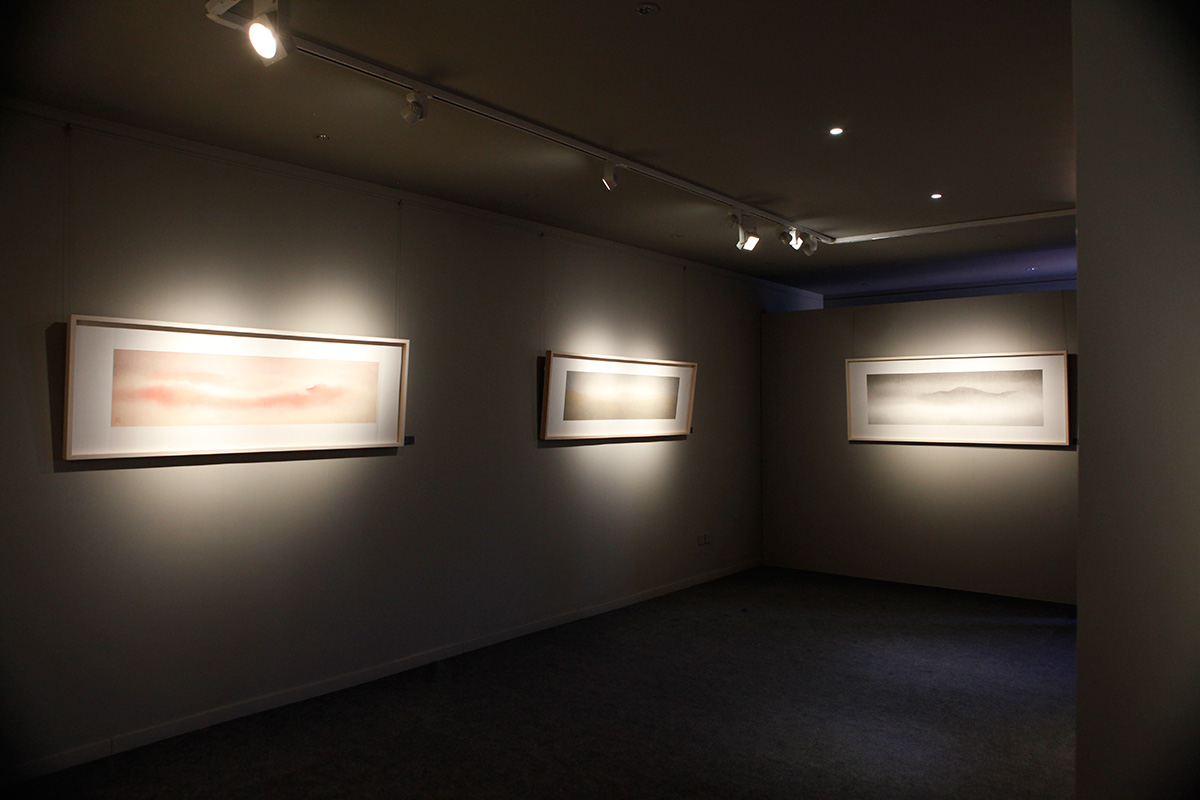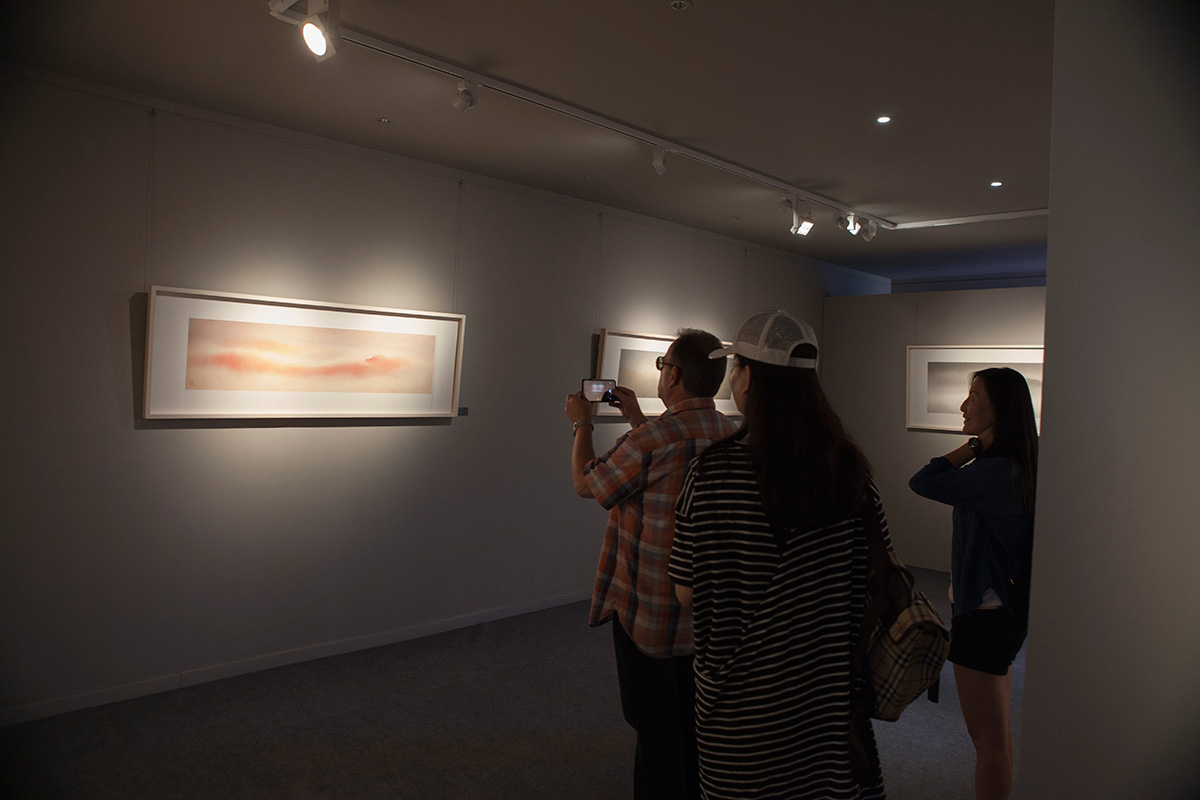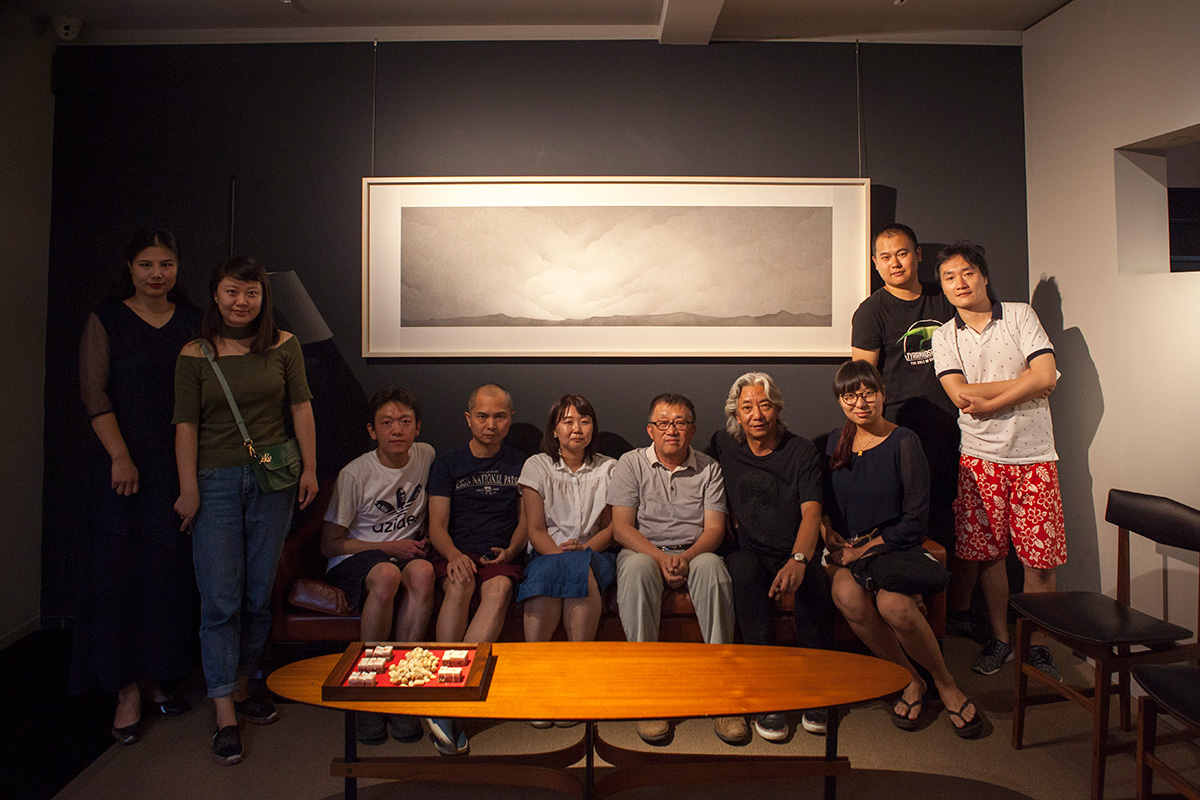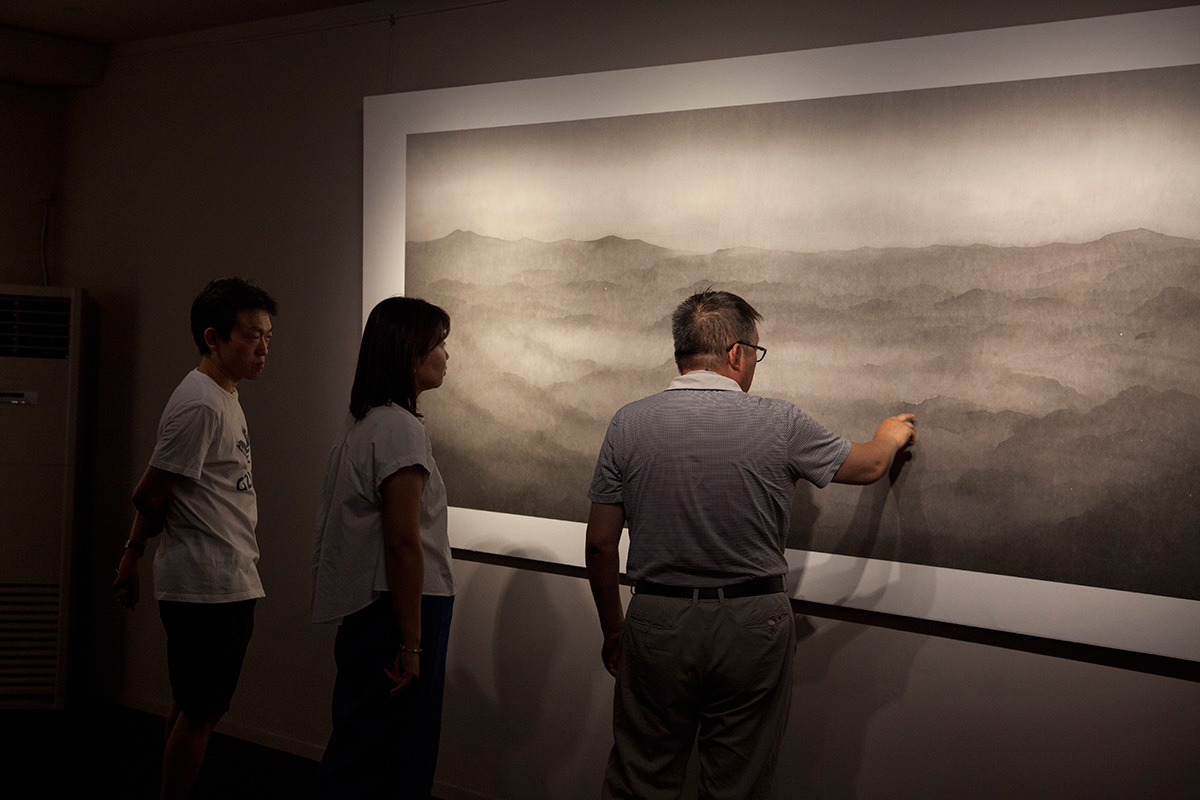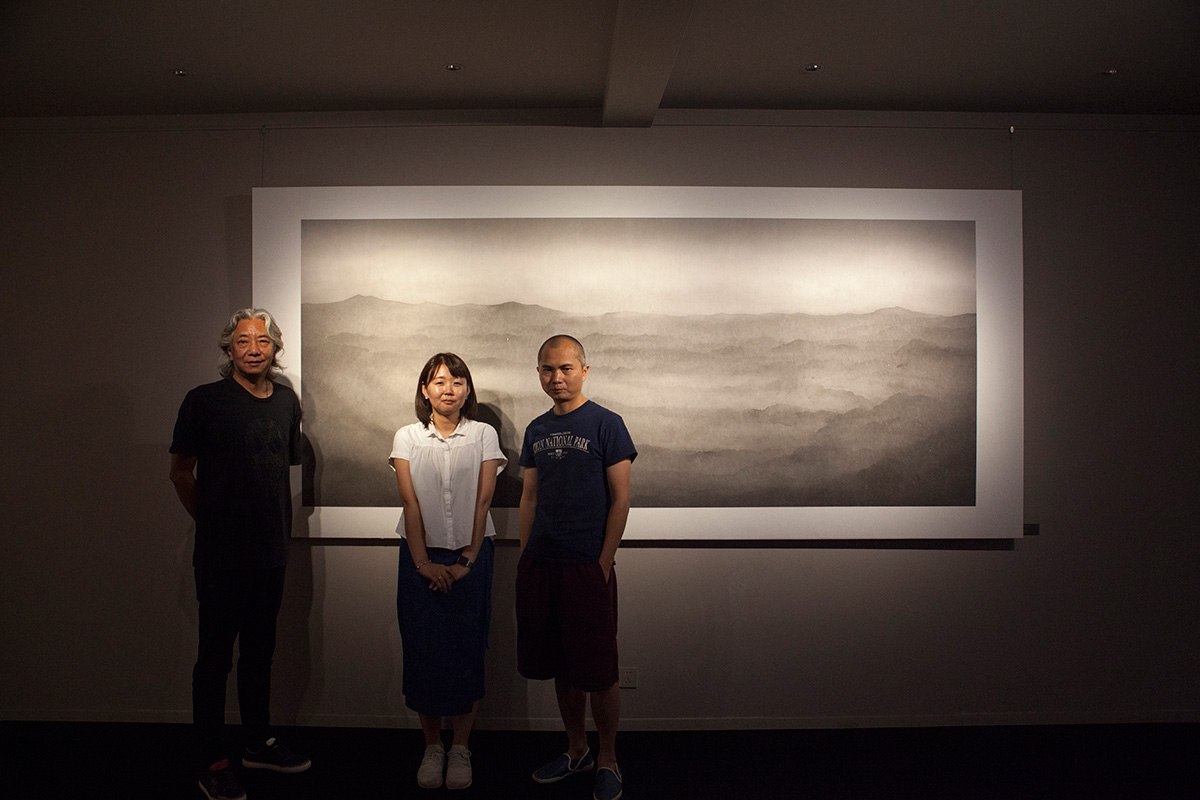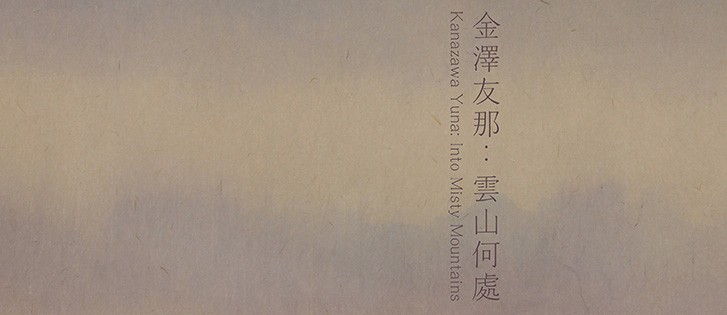
Into Misty Mountains
Kanazawa Yuna’s Landscapes in Mists
Weixi
People who grow up in mountains might feel genial when looking at Kanazawa Yuna’s ink paintings. The light in the woods, the paddy fields under the mountains, the mists drifting slowly up from the foot of hills, and the lonely ridge lines were all commonly seen in the old days. Those who grew up in town might be fascinated by the paintings. The winding paths, the huts in woods, various leaves, the clear winds, and the smell of the mountains which flow to us, bring about peace and joyfulness. Those living by the sea will feel something different about Kanazawa Yuna’s paintings. Her paintings contain very subtle changes in the tonal range and extremely rich layers. It is said that when it’s cloudy by the sea, the color of the clouds vary subtly from black to grey and their layers change also very complicatedly just like in the paintings.
Landscapes in Kanazawa Yuna’s painting are featured by light strokes and heavy ink, which are mostly constructed through accumulating ink and haloing with colors. She rejected the wrinkle method, a symbol of common landscape paintings. So is she a landscape painter still? She is, exactly. Her painting language and picturesque scenes can be traced back to the brushwork of Song Dynasty painters including Zhao Lingrang, Mi Fu and Mi Youren and to the misty and remote realms in works of Xia Gui, Yan Ciyu, Liang Kai and Muxi. If we say she isn’t a landscape painter, it might not matter much to her, because the Kanazawa Yuna is painting her utopia in which no real people or exact places exist.
Japan is a country with numerous mountains and a lot of rain. The beauty of landscapes in mists has been presented by many painters. In Azuchi-Momoyama, Chang Guchuan painted the Misty Pines (Wu Song Tu), and in Taishou period, Yokoyama Taikan left us with painted screens in which landscapes were veiled by mists. Kanazawa Yuna, at her early age in Japan, ever watched landscapes in mists and the ink paintings of Muxi, Hasegawa Tohaku and Yokoyama Taikan. Maybe the misty and remote realm has rooted deep in her sub-consciousness. Later, she watched the paintings of Mi Youren, Zhao Lingrang in the Song Dynasty in China and those of Gongxian at the early Qing Dynasty, from which she acquired a simple and elegant brushwork, and the misty and remote realm was finally presented on the paper. In the past, Yokoyama Taikan, his teacher and friends reformed the Japanese painting and established hazy painting school, reducing and even giving up lines. Now Kanazawa Yuna borrows the ink painting techniques of ancient Chinese masters, integrating them into Japanese painting style in Taishou period, which can be called great innovation. And it is especially valuable that she reserves her own features after learning from these great painters.
Perhaps out of the tenderness and toughness of Japanese, she constructs mountains with pieces and layers of trees and grass. Therefore, even those mountains and clouds haloed for countless times also seem tender. In Japanese paintings, lines are referred to as lifelines. Kanazawa Yuna concealed the lifelines in her paintings, but breaths of lives are diffusing. All these compose a Buddhist mood, while Buddhist mood also relies on real landscapes.
More than a decade ago, when she was in Japan, she liked painting (or producing) scenes without man. Rooms, streets, woods —— all quiet without any man. But we can always see light in her claustrophobic scenes. There are lights, windows, doors, mirrors, water, sky, or the screen showing the sky, which lead our eyes to the distant. Where the light is is not the outside world, but the inner one or the yearning. The light may also be the empty.
In the past more than one decade, Kanazawa Yuna constantly responded to that faint light, from Japan to China, from the indoor scenes to mountains and water. The wall dissipated and faded away gradually and then come the landscapes, the mists and clouds, which are mysterious and far way. However, no matter how complicated and hazy the scenes become, and how spacious the realms turn, the faint light is still there in the most distant. She might have ever met the light, the mists and darkness in MiYouRen’s Xiaoxiang Wonders (Xiao Xiang Qi Guan Tu), in Muxi’s Xiaoxiang Eight Sights (Xiao Xiang Ba Jing),and in Gongxian’s pictures. Whether in the past when she took indoor scenes as subjects or at present when she paints landscapes, she is the one who see the faint light in darkness.
Darkness is the densest shade instead of dead black, since it is an euphotic, hazy, and slightly dimmed middle tone. People who once lived in rooms with paper windows might know this kind of densest shade, understanding the faint light and floating dimness. Now although few people live in the houses with paper windows, we still instinctively feel this tranquil and mysterious realm and we have certain nostalgia toward it.
Long time ago, the writer, Tanizaki Jun ichirou, a fellow countryman of Kanazawa Yuna has repeatedly described the beauty of the densest shade, and he has written his prose masterpiece Ode to the Densest Shade. Now Kanazawa Yuna, with her hazy brush, paints the changes of mountains and clouds between dimness and brightness. We prefer to say she arouses people’s meditation by borrowing the landscapes in mists to present the beauty of the densest shade and of remoteness, rather than to say that she paints the mountains and clouds.



